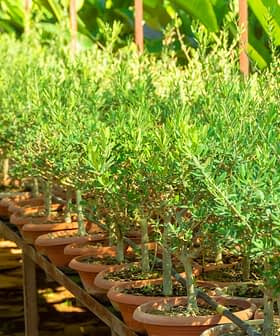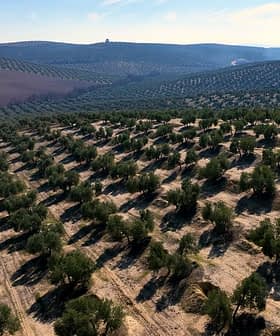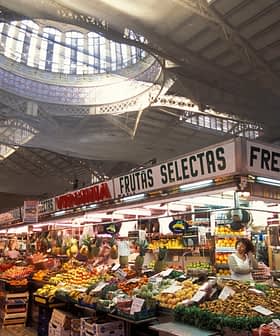Organic Olive Groves Flourish in Spain
In 2018, the surface area of organic olive groves increased by three percent in Spain. A country-wide push toward sustainability and better profit margins on organic oils are among the contributing factors.
The number of acres of organic olive groves in Spain increased by three percent in 2018, according to the Ministry of Agriculture, Fisheries and Food.
Overall, organic agriculture surface area has increased by 7.9 percent, making Spain the largest organic farming nation in Europe and the fourth-largest in the world.
The productivity of the organic olive grove today is very similar to the traditional one, in terms of fruit, which in some cases makes it more profitable via the value of the product, generally 10 to 15 percent more.
The increase in organic – or ecological, as it is also known in Spain – olive groves comes as the world’s cultivated olive tree surface area shrank for the first time in more than two decades. Spain experienced one of the largest decreases.
According to data collected from the Research Institute of Organic Agriculture (FIBL) and the International Federation of Organic Agriculture Movements (IFOAM) that was analyzed by Juan Vilar Strategic Consultants, Spain now has almost 495,000 acres of organic olive groves; nearly one-quarter of the world’s total.
See Also:Sustainability NewsIn 2018, Spain produced 33,400 tons of olive oil from these organic groves. Only Tunisia, with 637,500 acres of organic groves and Italy, with 585,600 acres, produced more.
“The ecological olive grove is characterized by the use of natural products and not of synthetic ones [often used to increase productivity],” Vilar, an olive oil expert and professor at the University of Jaén, told Olive Oil Times.
He attributed part of this increase in organic olive groves to the lack of competitiveness in traditional ones.
“The productivity of the organic olive grove today is very similar to the traditional one, in terms of fruit, which in some cases makes it more profitable via the value of the product, generally 10 to 15 percent more,” he said.
Persistently low olive oil prices in Spain over the past harvest season have led to many producers seeking ways in which to create added value to their products. Certified organic and other types of “green” labels have been one way in which producers are able to do this.
Traditional olive groves are not the only ones that are increasingly switching to organic practices. Some super-intensive groves are also adopting these sustainable methods of cultivation.
“It is a system that is not exclusive to traditional olive groves, there are already more than 25,000 hectares (61,800 acres) of modern ecological olive groves on the planet,” Vilar said. “[These also] boost income via competitiveness and through the differentiation of the products.”
Overall, Vilar sees more olive groves – whether they are organic or not – as a good thing.
“The olive grove and the environment where it develops forms an ecosystem, where numerous species coexist at all trophic levels,” he wrote in a recent blog post on the subject. “Olive plantations can house up to 200 species of wild flora plants per hectare, 90 vertebrate species and 160 species of invertebrates associated with olive cultivation.”
Along with promoting biodiversity, Vilar added that the rise in organic olive groves also helps prevent the spread and promote the early detection of Xylella fastidiosa.
“With respect to the Xylella, being the most carefully monitored olive trees, [ecological olive groves] prevent the vectors from propagating in a somewhat simple way,” he said.
The Ministry of Agriculture, Fisheries and Food said that the annual average growth of Spain’s total organic cultivation surface area is growing at a rate of about seven percent each year.
Overall, the growth rate of organic olive groves is outpacing that of traditional and super-intensive groves. As long as prices for organic oils are maintained and government aid continues for organic growers, Vilar thinks the trend is likely to stay.
“The ecological olive grove grows every year at an average rate of 1.6 percent, while the world olive grove, this year has decreased, and the previous years made it to 0.7 percent annually,” he said.








